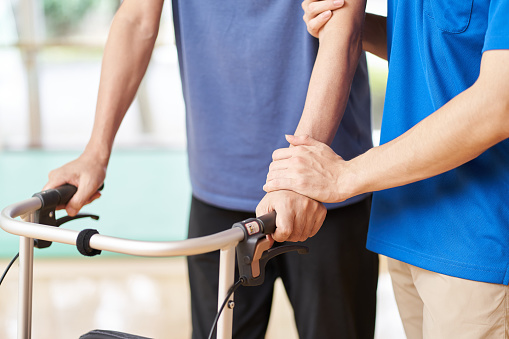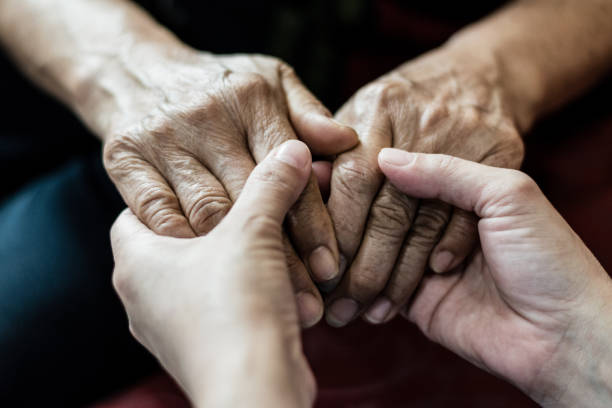When you have Meniere’s disease, you may wonder if vestibular rehabilitation is the right course of treatment for you. You’ll also want to know exactly what happens during a program, how long it takes, and why you might feel worse after treatment. Read on to learn more about the benefits of vestibular rehabilitation.
Does vestibular rehabilitation work for Meniere’s
The treatment of vestibular disorders is not a quick fix. Some patients may experience symptoms for a few days or weeks, while others may experience symptoms for life. However, vestibular rehabilitation can be an effective way to improve a person’s symptoms and overall quality of life. For instance, people suffering from BPPV often experience a sensation of swaying or spinning. This is due to the movement of calcium crystals in the ear.
Treatment for vestibular disorders often involves physical therapy. Physical therapists use specific exercises to target specific problems related to the vestibular system. These exercises are designed to help patients regain their sense of balance and improve their ability to participate in normal daily activities. These exercises also help patients regain coordination in their vestibular ocular reflex, which keeps visual targets in focus while the head moves. This helps them participate in activities without dizziness.
While physical therapy is not a cure for Meniere’s disease, it does help people improve their balance and reduce the risk of falls. Some studies have found that patients who undergo vestibular rehabilitation saw a reduction in their time to recovery and improved postural stability.
What do you do at a vestibular rehabilitation?
A Mnire’s disease vestibular rehab treatment is designed to teach patients how to cope with their symptoms, such as dizziness and vertigo. It uses specialized exercises and activities to train the brain to ignore triggers of dizziness and focus on activities. It can be individualized to meet the needs of each patient.
The program may last six to eight weeks, depending on the severity of the disease and the patient’s response to therapy. It can be used as a stand-alone treatment or part of a multidisciplinary treatment plan. The goal of this therapy is to increase the patient’s ability to balance and walk with a full gait.
Patients will undergo a structured program that includes exercises for the head, eyes, and neck, as well as visual stability training. The goal is to retrain the vestibular system, which results in better balance and improved quality of life. The exercise program is usually led by a physiotherapist or clinical scientist.
How long does vestibular rehabilitation take?
The duration of the Mnire’s disease vestibular rehab program varies depending on the severity of symptoms and the patient’s response to therapy. Some patients experience results after just one or two sessions, while others require several months. A physical therapist will work with you to determine the best plan for your needs.
The goal of the therapy is to improve your balance and reduce the dizziness you experience. Dizziness may occur at any time, whether standing or sitting, or during any movement. The symptoms can last for a few seconds or several hours. In some cases, dizziness can be a constant and uncomfortable experience.
In addition to reducing symptoms, vestibular rehabilitation can also improve the patient’s ability to perform daily tasks. Vestibular rehabilitation exercises help the body learn how to process balance information. These exercises improve coordination between the eyes, brain, and inner ear. They also help the brain to tolerate abnormal movements.
Why do I feel worse after vestibular therapy?
After vestibular therapy for Mnire”s disease, some people may find that their symptoms worsen. The exercises are meant to challenge the vestibular system, and to help it learn how to function better. The key is to stop the therapy when symptoms get elevated. This will avoid putting your brain into overload, which could result in longer episodes of symptoms.
Patients who undergo vestibular rehabilitation exercises learn to improve their balance and reduce symptoms of dizziness and vertigo. These exercises may involve changing positions, sitting, standing, or lying down. Patients often experience dizziness that can last for seconds or minutes.
Another common cause of the symptoms is a viral infection of the vestibular nerve, also known as labyrinthitis. This condition can cause sudden loss of balance function in one ear. In these cases, the brain compares the output from the two ears and interprets the difference as turning. Symptoms of labyrinthitis can be severe and last for several days. Some people also experience hearing loss.
How successful is vestibular therapy?
The question of whether or not vestibular therapy is effective in patients with Mnire’s disease is not a simple one. Despite its effectiveness in treating this disorder, it is not without risk. It can lead to relapses. The reason is that the brain sometimes decompensates for the condition, causing it to return to its original state. This may be triggered by different stressors, such as a bad cold or a change in medication. Although these relapses can occur, recovery is usually much faster than the initial compensation.
The process of vestibular rehabilitation involves exercises that help the body retrain its balance system. These exercises involve head, eye, and neck movements. This retraining helps patients identify objects in the environment while moving. These exercises are led by physiotherapists or clinical scientists.
One study evaluated the effectiveness of two VR programs: stand-alone VR and blended VR. The stand-alone VR group showed less dizziness impairment and reduced anxiety. The blended VR group showed similar results to the stand-alone VR group.
How do I calm my vestibular system?
If you have a vestibular disorder, it’s important to know how to calm your system during rehabilitation. Excessive worrying can exacerbate symptoms and slow the recovery process. It can also prevent you from taking necessary medications, keeping healthcare appointments, and taking proper care at home. In addition, it can affect your sleep, which can further disrupt your recovery.
Depending on the severity of your condition, you’ll need to find a treatment plan that works for you. A physiotherapist specializes in vestibular rehabilitation and can recommend exercises to help you calm your vestibular system and recover from your disease. The therapy will work to help you regain your balance and decrease your dizziness symptoms.
Patients who have vestibular problems typically stop relying on inner ear signals and instead use input from the eyes, muscles, and joints to compensate. This leads them to overcompensate by developing abnormal movements. During rehabilitation, your physical therapist will address these compensatory patterns and work to desensitization.
How do you do vestibular rehabilitation at home?
The goal of vestibular rehabilitation is to help the brain utilize the information received from the inner ear in a more efficient manner. This is done through a combination of repetitive stimulation and movement. This method will improve overall balance and reduce dizziness. It can help you return to your daily routines and daily tasks.
A therapist may teach patients exercises that help with balance problems. They also focus on body mechanics and posture, which will help with daily activities. The exercises are designed to target different aspects of the condition, and are done in a controlled, professional environment. Each patient’s rehabilitation program will be customized to meet his or her individual needs.
The purpose of a vestibular rehabilitation programme is to improve the ability of the body to compensate for dizziness and balance problems. It is aimed at improving balance and decreasing the frequency and intensity of dizziness. The exercises should be done slowly and gently. It is important not to exert stress and anxiety as these can affect the healing process.
What vitamins help vestibular system?
Some vitamins and minerals are helpful for the vestibular system in Mnire’s disease, such as zinc and copper. Others help with digestion. Vitamin B3 can improve circulation and maintain mucous membranes. A deficiency in any of these vitamins or minerals may result in neurological symptoms like dizziness and vertigo. Taking a high-quality B Complex daily may be helpful to alleviate any stress your body may be under.
Vitamin D is known to have a protective effect on the vestibular system. It works through calcium metabolism and has shown a positive effect on vertigo and dizziness. It also appears to have immunomodulatory activity. It has been studied in a number of different settings, including Meniere’s disease.



